Hello, Mac Studio: Apple announces brand-new performance-oriented desktop computer and display
posted Tuesday, March 8, 2022 at 3:30 PM EDT
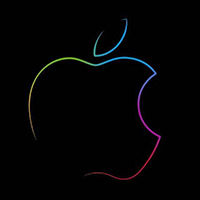
Apple today hosted a virtual event dubbed 'Peek Performance.' As always, rumors ran amok leading up to the presentation, with industry experts expecting Apple to announce new iPhone SE and iPad Air models and at least one new Mac. Earlier this year, the smart money seemed to be on new M2-equipped notebooks. However, a perhaps even more exciting recent rumor pointed toward a brand-new Mac series aimed at creative professionals, 'Mac Studio,' and an accompanying new monitor. Where there's smoke, there's often fire.
Did Apple's presentation live up to the expectations? Let's recap today's 'Peek Performance' event and see what Apple has been cooking in Cupertino. Not to bury the lede, but Apple has prepared a tasty meal for photographers and videographers alike.
iPhone announcements
Last autumn, Apple launched its new iPhone 13 series, including the iPhone 13 Pro and Pro Max. Today, Apple announced a new green color for its iPhone 13 and iPhone 13 Pro models.
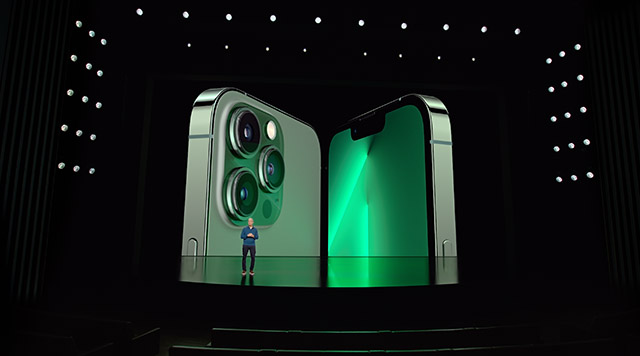
Apple is bringing the same A15 Bionic chip from its iPhone 13 series to a new iPhone, a new iPhone SE. The iPhone SE has long combined high-end performance at an affordable price. The iPhone SE maintains the same form factor as the previous generation, including a home button rather than a full-screen display.
The iPhone SE's CPU is nearly twice as fast as the iPhone 8 and significantly faster than older models. The GPU is 2.2x faster than the iPhone 8.
The iPhone SE is available in three colors, midnight, starlight and Product Red. In less fancy terms, the SE will come in black, white and red. The iPhone SE has a glass back, like the iPhone 13 series, and includes IP67 weather resistance. There are also internal design updates, plus improved battery life. Plus, the iPhone SE includes 5G technology, making it the most affordable way to get 5G in the iPhone family.
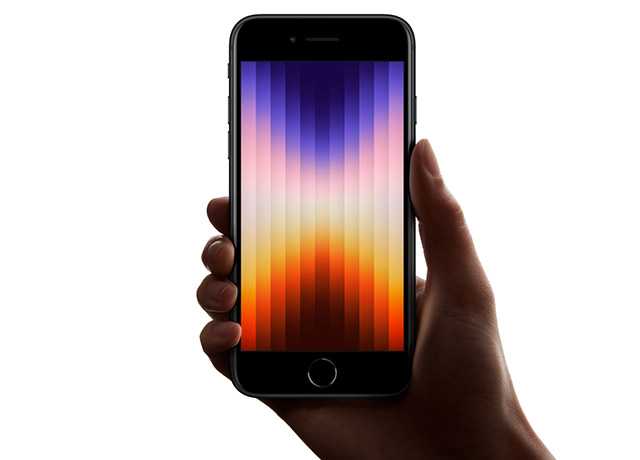
In terms of camera technology, the A15 Bionic chip powers computational photography features, including Smart HDR 4. The chip also results in improved video quality, especially in low-light situations.
iPhone SE starts at $429, and preorders start this Friday ahead of availability starting March 18.
iPad
Apple announced an update to the iPad Air family. The new, 'even more amazing' iPad Air promises significant performance improvements over the previous generation. The iPad Air includes Apple's M1 chip, the same as the iPad Pro. The new model has up to 60% faster CPU performance and twice as fast graphics.
The iPad Air includes a retina display with an anti-reflective coating and 500 nits of brightness. The front camera is updated. It is now a 12MP Ultra Wide camera, meaning the iPad Air supports Apple's popular center stage feature for FaceTime. This now means that all iPad models include this feature.
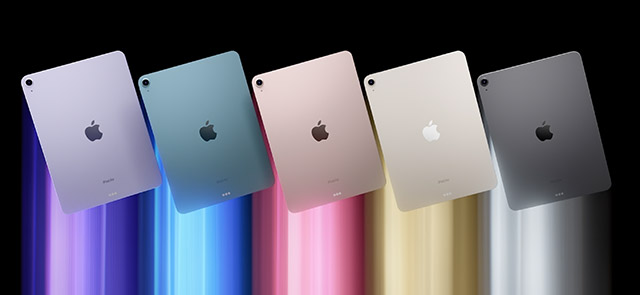
In terms of connectivity, the iPad Air's USB-C port is twice as fast. The new iPad Air also includes 5G connectivity (cellular model). iPad Air works with Apple's Smart Keyboard and the Apple Pencil (generation 2).
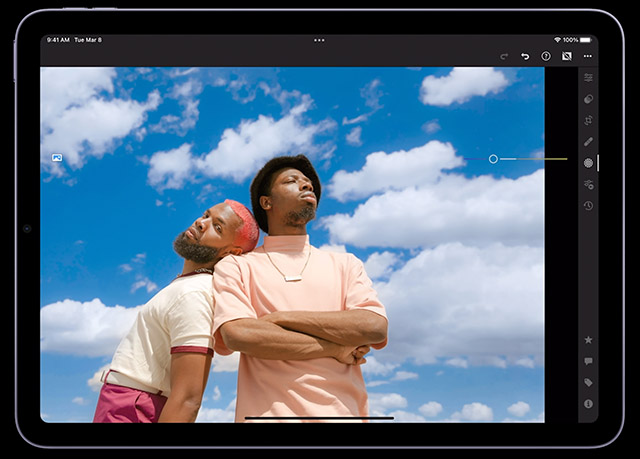
The new iPad Air comes in space gray, starlight, pink, purple and a new shade of blue. It will be available starting at $599, the same price as the last generation model. The iPad Air comes in 64GB and 256GB configurations with Wi-Fi or Wi-Fi + Cellular. Preorder starts Friday ahead of a March 18 release date.
M1 Ultra
Apple's silicon has transformed the Mac lineup. Nearly every product in the lineup has been transitioned to Apple's in-house silicon, including the all-new MacBook Pro that was announced last fall. Apple has decided that it's time to create a brand-new product line, the Mac Studio.

Powering the new computer is a new chip, the M1 Ultra. It is a 'monster of a chip,' per Apple. The M1 Ultra joins the original M1, plus the M1 Pro and M1 Max that Apple introduced with the latest MacBook Pro generation. M1 Ultra is even more extreme and designed for desktop. M1 Ultra is built upon the M1 Max foundation. M1 Max has a 'hidden feature,' die-to-die connectivity technology. Apple combines two M1 Max chips with its patented UltraFusion architecture. It has twice the connection density of any technology available. It has 2.5TB/s inter processor bandwidth while using very little power.
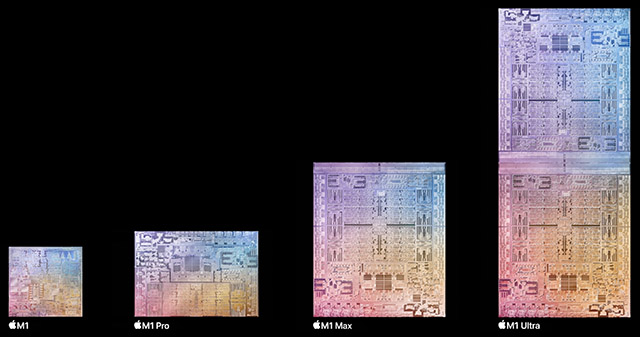
UltraFusion allows the unified M1 Max chips to perform like a large single chip. The M1 Ultra supports increased memory bandwidth, up to 850GB/s. That is truly ridiculous performance. M1 Ultra supports up to 128GB of unified memory, double what's possible on the M1 Max. The chip has a 20-core CPU and a 64-core GPU. The Neural Engine includes 32 cores and can perform 22 trillion actions per second. The media engine promises unparalleled video editing capabilities, too.
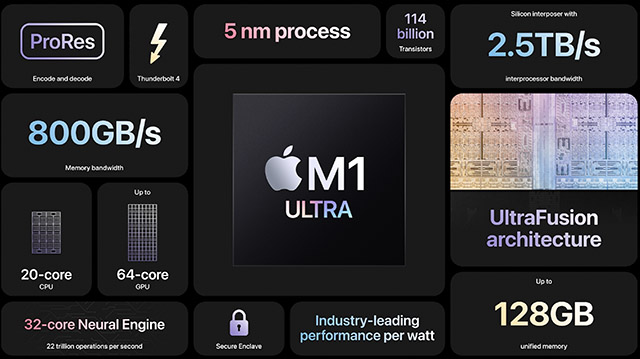
It's a lot of performance. The M1 Ultra provides higher performance than competing 16-core PC desktops while using 100W less power. It's a similar story with GPU performance and efficiency. Basically, the M1 Ultra allows Apple to squeeze way more power while using significantly less power and physical space.
Mac Studio
The M1 Ultra chip is featured in Apple's new Mac Studio desktop computer. The Mac Studio answers the call from users who demanded even more power and connectivity. Apple says that people asked for performance, creativity and modularity. The Mac Studio promises to deliver all of that and more.
The Mac Studio looks like a chunky Mac mini. It has a small footprint, 7.7" square, but it's taller than the Mac Mini at 3.3".
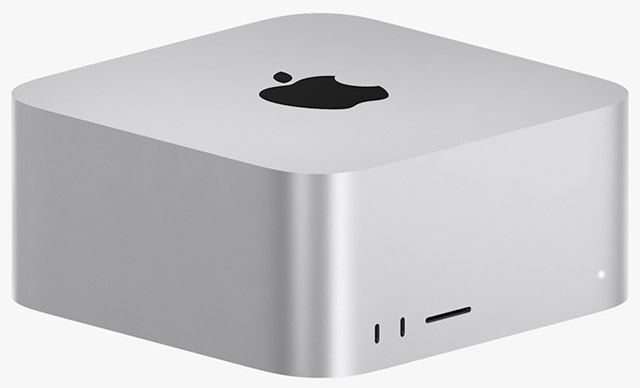
On the inside, the Mac Studio has a unique double-sided blower that pulls air in from the perforated aluminum base. The cool air is guided to the computer's chips. The rear exhaust allows heat to be efficiently cycled out of the machine. Apple says that most of the time, you'll barely hear the machine at all, even during strenuous workloads.
Connectivity matters a lot to pros. The back has four thunderbolt ports, two USB-A ports, a pro audio jack and an HDMI port. Wi-Fi 6 and Bluetooth 5 are built-in. There's also a gigabit ethernet port. There are two USB-C ports (Thunderbolt 4 with M1 Ultra) on the front, and an SDXC card slot. The machine can support four XDR displays plus a 4K TV.
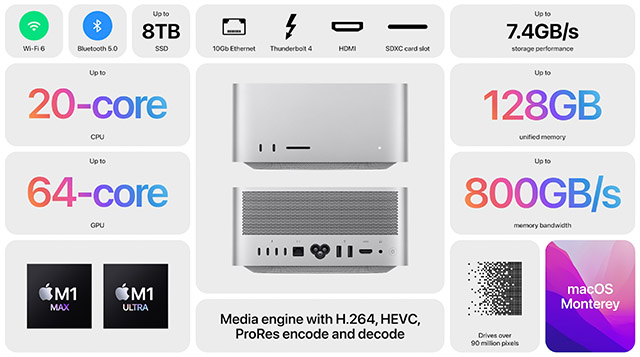
Looking at Mac Studio with M1 Max, it's up to 2.5 times faster than the fastest 27-inch iMac and up to 50% faster than the Mac Pro with a 16-core Xeon processor, Apple's most popular Mac Pro configuration. GPU performance is up to 3.4x faster than the fastest 27-inch iMac. It even outperforms Mac Pro with its most popular graphics card.
If you want even more performance, the M1 Ultra is for you. The CPU performance is up to 3.8x faster than the fastest 27-inch iMac and up to 90% faster than Mac Pro with 16 cores. Speaking of the 27-inch iMac, it's now absent from Apple's online store, which is interesting. The M1 Ultra is up to 60% faster than the 28-core Mac Pro. Mac Studio is up to 80% faster with GPU performance than the highest-end Mac Pro. These are massive gains.
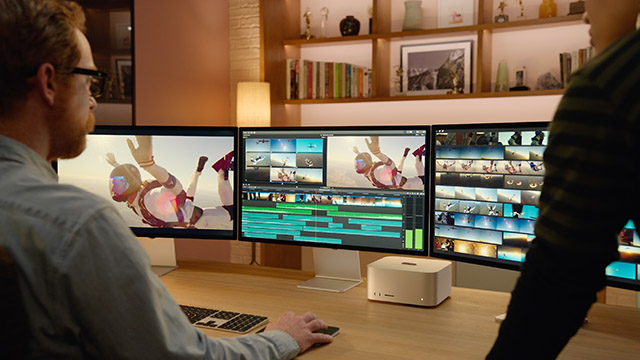
With M1 Max, Mac Studio offers up to 64GB of unified memory. M1 Ultra doubles that to 128GB. The Mac Studio's SSD has up to 7.4GB/s performance and up to 8TB capacity.
Mac Studio can play 18 streams of 8K ProRes 422 video. Per Apple, no other computer in the world can do this. While the Intel-powered Mac Pro is a great machine, it's easy to see why most power users will opt instead for the new Mac Studio. Speaking of the Mac Pro, Apple mentioned that it remains the lone standout in its lineup with Intel chips, something Apple says will be changing. There's still no word on when a new Mac Pro is coming, but it's definitely on the radar.
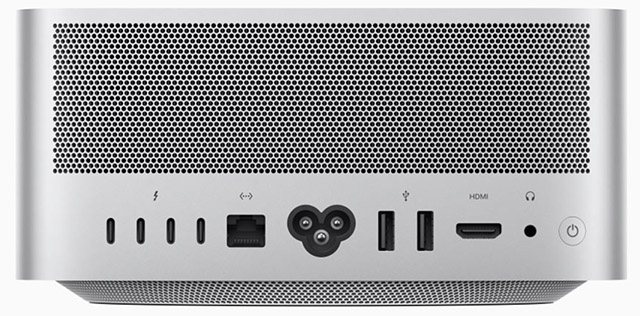
The Mac Studio promises a lot of power, but at what cost? Mac Studio with M1 Max starts at $1,999. If you want the new M1 Ultra, you'll need to pay at least $3,999. The Mac Studio is available to order now and will launch on March 18.
Studio Display
Alongside the Mac Studio, Apple announced a new Studio Display. It's the perfect complement to the Mac Studio computer.
The display has an all-aluminum enclosure with a slim profile. The stand lets you tilt the display up to 30 degrees. You can also purchase the display with a tilt and height adjustment combination stand and a VESA mount option.
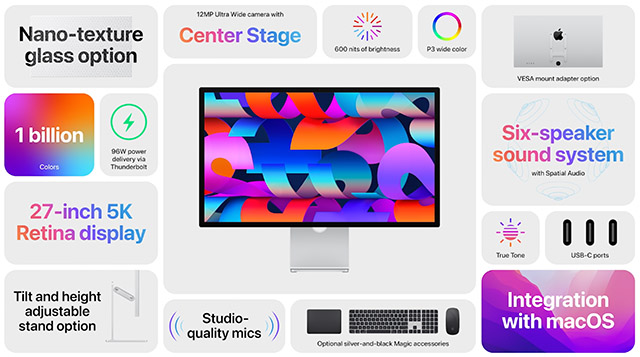
The Studio Display has a 27-inch active area with 14.7M pixels. It's a 5K Retina display. With 600 nits of brightness, P3 wide color and support for over a billion colors, it promises excellent color performance and sharpness. It includes True Tone and anti-reflective coating. There's also a nano texture glass option to further minimize glare.
The display includes an A13 Bionic chip inside. The display has a 12MP Ultra Wide front-facing and supports Center Stage. It's the first Mac computer or peripheral with Center Stage. It also includes a three-mic array, promising to be a good display for meetings and calls.
Audio matters too. Studio Display includes a six-speaker audio array with four woofers. It also includes a pair of tweeters. The speakers also support Spatial Audio for music and video with Dolby Atmos. They're the highest-fidelity speakers Apple has ever created for the Mac.
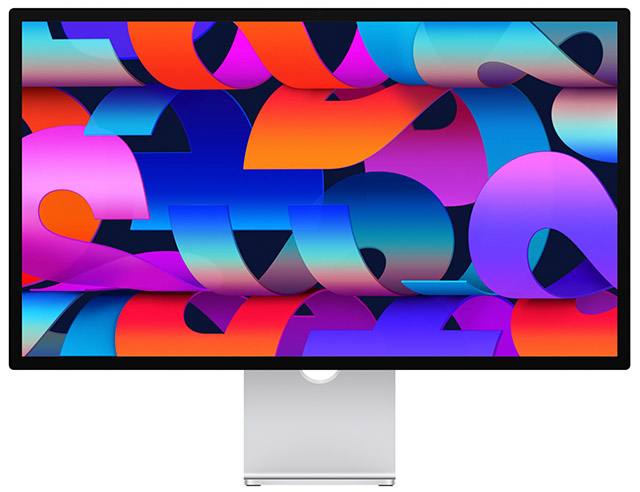
The Studio Display has three USB-C ports (10GB/s) and includes a Thunderbolt port. The port has 96W of power delivery, allowing it to charge any Mac notebook. You can connect up to three Studio Displays to a MacBook Pro. While it's designed to complement Mac Studio, the display is well-suited to work with any Mac.
The Studio Display starts at $1,599 and is available to order today. It will release on March 18.